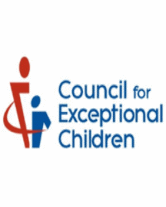Keys to Successful Inclusion
Including Students with Disabilities in General Education ClassroomsFrom: The ERIC Clearinghouse on Disabilities and Gifted Education
ERIC EC Digest #E521 1993
The Individuals with Disabilities Education Act (IDEA) requires that a continuum of placement options be available to meet the needs of students with disabilities. The law also requires that:
"to the maximum extent appropriate, children with disabilities ... are educated with children who are not disabled, and that special classes, separate schooling, or other removal of children with disabilities from the regular environment occurs only when the nature or severity of the disability is such that education in regular classes with the use of supplementary aids and services cannot be attained satisfactorily. IDEA Sec. 612 (5) (B)."
One of the educational options that is receiving increasing attention is meeting the needs of students with disabilities in the regular classroom. This digest is written for the practitioner who is working in the regular class environment with students who have disabilities. Years of research have contributed to our knowledge of how to successfully include students with disabilities in general education classes. Listed below are the activities and support systems commonly found where successful inclusion has occurred.
Attitudes and Beliefs
- The regular teacher believes that the student can succeed.
- School personnel are committed to accepting responsibility for the learning outcomes of students with disabilities.
- School personnel and the students in the class have been prepared to receive a student with disabilities.
- Parents are informed and support program goals.
- Special education staff are committed to collaborative practice in general education classrooms.
Services and Physical Accommodations
- Services needed by the student are available (e.g., health, physical, occupational, or speech therapy).
- Accommodations to the physical plant and equipment are adequate to meet the student's needs (e.g., toys, building and playground facilities, learning materials, assistive devices).
School Support
- The principal understands the needs of students with disabilities.
- Adequate numbers of personnel, including aides and support personnel, are available.
- Adequate staff development and technical assistance, based on the needs of the school personnel, are being provided (e.g., information on disabilities, instructional methods, awareness and acceptance activities for students, and team-building skills).
- Appropriate policies and procedures for monitoring individual student progress, including grading and testing, are in place.
Collaboration
- Special educators are part of the instructional or planning team.
- Teaming approaches are used for problem-solving and program implementation.
- Regular teachers, special education teachers, and other specialists collaborate (e.g., co-teaching, team teaching, teacher assistance teams).
Instructional Methods
- Teachers have the knowledge and skills needed to select and adapt curricula and instructional methods according to individual student needs.
- A variety of instructional arrangements are available (e.g., team teaching, cross-grade grouping, peer tutoring, teacher assistance teams).
- Teachers foster a cooperative learning environment and promote socialization.








